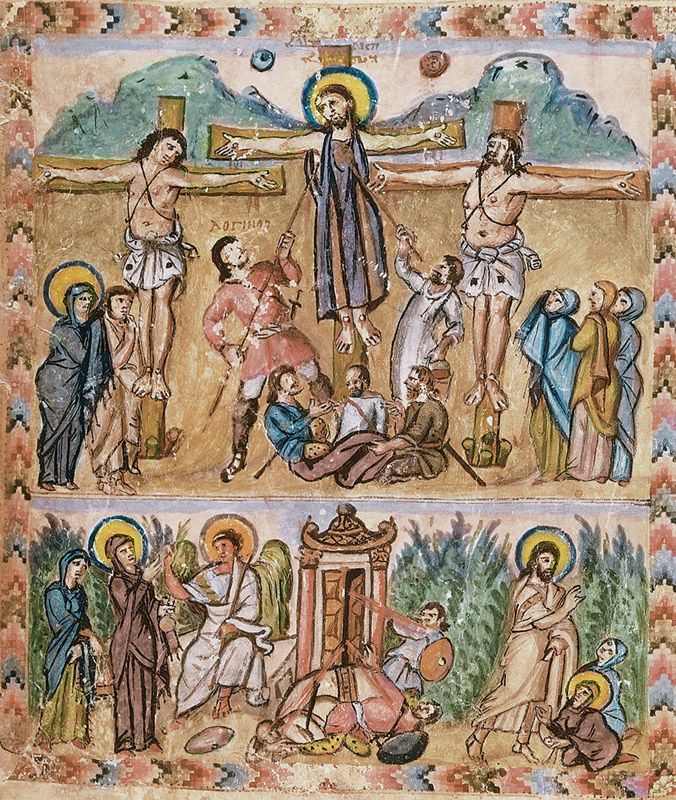
The Crucifixion and Resurrection
AD 586
Illumination from the Rabbula Gospels
Syriac, 13 x 10½ in. (33 x 26.7 cm.)
Florence, Biblioteca Medicea-Laurenziana, Cod. Pluteus I, 56, fol. 13r.
As in many early Crucifixions, Jesus wears a liturgical "colobium," not the skimpy perizoma of the thieves. The word above the man with the spear can be transliterated as LOGINOS – that is, the soldier Longinus, whose blindness was cured by the blood that flowed from Jesus' side. On the other side of the cross is the man with the sponge; in front, the soldiers dicing for Jesus' garment. The woman on the left is most likely the Virgin Mary, standing beside St. John. She resembles Mary Magdalene in the lower panel, but is not as slim or erect.
The lower panel presents the Resurrection as told in Matthew 28. In the center we see how "the guards were struck with terror, and became as dead men" at the opening of the tomb (verse 4). The tomb is modeled on the actual Aedicula in Jerusalem. An angel sits on a sarcophagus beside it and tells "Mary Magdalen and the other Mary" that Jesus is risen and they should go and tell the disciples (verses 5-7). On the right Jesus greets the women and they "took hold of his feet, and adored him" (verses 8-10).
The "other Mary" may be the "mother of James" who accompanies Mary Magdalene in Mark 16:1. However, it is just possible that the haloed woman in the lower panel is not Mary Magdalene but Mary the mother of Jesus. The Golden Legend cites two early Christian writers supporting the opinion that it was to his mother that Christ first appeared, and that she was the one who told the disciples (Ryan, I, 222). If that is what the image is asserting, then the "other Mary" would most likely be Mary Magdalene.
Read more about the Crucifixion, Longinus, and the Resurrection.
Source: Merback